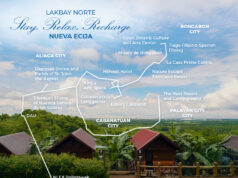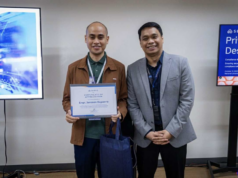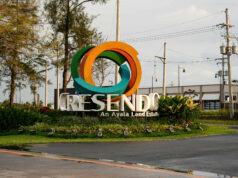MARIVELES, Bataan — The Bataan Export Processing Zone (BEPZ) turned into the Bataan Economic Zone (BEZ) and to the present Freeport Area of Bataan (FAB) may have its ups and downs in the course of its history but it is holding tight and inching fast towards becoming the fastest growing freeport in the Philippines. AFAB’s corporate affairs department through information officer Hazel Keith Elloren on Wednesday furnished this paper the transition period from the creation of BEPZ to FAB.
On June 21, 1969, a law was passed transforming Mariveles, Bataan into a port of entry and the establishment of the Foreign Trade Zone Authority, signaling the creation of BEPZ, the first in the country.
In November 1972, a few months after Martial Law was declared, then President Ferdinand E. Marcos, Sr. issued Presidential Decree No. 66 that amended RA 5490 and created the Export Processing Zone Authority. BEPZ was placed under EPZA and became fully operational.
RA 7916 was enacted on Feb. 21, 1995 creating the Philippine Economic Zone Authority (PEZA). BEPZ was then converted into BEZ that was placed under PEZA’s control.
On Oct. 23, 2009, RA 9728 was signed into law that converted BEZ into FAB and created the Authority of the Freeport Area of Bataan (AFAB). AFAB was tasked to manage FAB.
AFAB became fully operational on June 29, 2010. RA 11453 passed on Aug. 30, 2019 further strengthened the powers and functions of AFAB.
Elloren narrated how the FAB seized the opportunity to take advantage of its strategic location and natural endowments to attract investments. With its promises of giving out the best incentives and its ability to supply the most exceptional workforce, she said, more investments came in that from 39 locators in July 2010, it increased to 53 or by 40% in May 2011, just less than a year after it started operation.
In its first year, FAB ensured that all resources were put to productive use: (1) the FAB Dam; (2) seaports; (3) standard facility buildings; and (4) water treatment plants. Envisioning the freeport's tourism potential through its triangulated location with famous tourism sites like Manila, Cavite, and Corregidor, a ferry service was initiated in 2011.
Created next was the Immigration One-Stop Shop in partnership with the Bureau of Immigration and duty-free shops were also opened. AFAB's collaboration with different local and national agencies continuously fulfilled its purpose of attracting a wide range of investors and strengthened the workforce it targets to provide for the current and potential job requirements in the FAB, Elloren said.
The next years, she noted, continuously showcased the growth and progress within the freeport as the center of trade, innovation, and sustainable development in Asia. The FAB was officially recognized as the first Labor Law-compliant freeport zone in the country in 2015.
Elloren said there were 97 operational locators as of July 2022 that the AFAB looks to retain this number up to the end of this year. She explained that even before, the AFAB is continuously synergizing its promotions effort with the national government through the Philippine Investments Promotion Plan to focus on attracting priority sectors that are viable investments in the country.
Asked of the benefits of locating in AFAB or other economic zones or freeport zones, she answered there are tax and fiscal incentives provided and there is ease of doing business.
Elloren said that since AFAB began operations in 2010, the number of FAB workers increased from 12,777 to 38,326 as of July 2022, and a high of 44,000 plus before the pandemic. She sees this growth as directly proportional with investment, trade facilitation, port services, and income growth that enables the AFAB to contribute bigger shares to the government.
“If things remain on course, we foresee us reaching 40,000 workers again by the last quarter of the year,” she said.
Engr. Emmanuel Pineda is the present AFAB administrator while lawyer Pablo Gancayco is chairman of the board.
One of the locators, Mitsumi Philippines, Inc. that is manufacturing various electronics components, has been in Mariveles for 33 years. It has operated under BEPZ, BEZ and now, FAB.
Jun R. Fevidal, human resource senior supervisor, said Mitsumi, a Japanese- owned company, has been established since 1980. “It remains operational and competitive in producing new product line to cope up with global demand and requirements.”
He considered BEPZ, the first economic zone in Asia, and later FAB, as giving a boost to Mitsumi since locating and operating in Mariveles.
Fevidal is in favor of the government allowing more freeports to operate to help uplift the economy. “Yes, for more employment opportunities and revenues in the future.”
William Verzon, turning 60 in October, has been with Mitsumi for 33 years. He started as Mitsumi’s human resource senior manager. He now holds the position of human resource/general affairs senior manager.
Asked of the advantage of working in a freeport-based firm, Verzon pointed to the ease and convenience in dealing with different government agencies through the one-stop shop.
If he considers it a must for the government to put up additional freeport in the country, like his mother company, Verzon favored it, saying it will translate to more employment opportunities and revenues.





